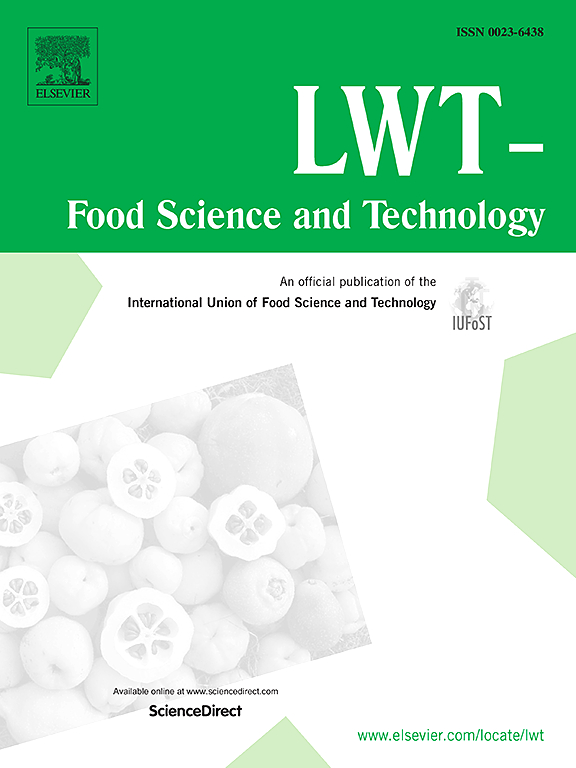Having their cake and eat it too: Effects of different cations in reduced-salt myofibrillar protein microgel pickering emulsion under high-intensity ultrasound
IF 6
1区 农林科学
Q1 FOOD SCIENCE & TECHNOLOGY
引用次数: 0
Abstract
Health concerns have increased the demand for low-salt emulsified meat products emulsions; however, salt-soluble myofibrillar proteins (MP) are less than optimal emulsifiers under low-salt conditions. In this study, four different cations (Na+, K+, Ca2+, and Mg2+) were added to a Pickering emulsion and high-intensity ultrasound (HIU, 20 kHz, 600 W) was used to determine the quality of the final emulsion. The divalent cation group was found to significantly (P < 0.05) improve the emulsification performance of the emulsion; in particular, the emulsion activity index and emulsion stability index of Mg2+-H group increased to 16.24 ± 1.22 m2/g and 89.66 ± 3.01%, respectively. Measurements of the particle size and zeta potential confirmed that the emulsion particle size of the Mg2+-H group decreased, and the electrostatic repulsion force increased. Based on the surface hydrophobicity and endogenous tryptophan spectra, the particle structure of the MP microgel was determined to be a more stable emulsifier. What's more, the divalent cations promoted the droplets to become evenly dispersed under high-intensity ultrasound. The micrograph confirmed this result: the divalent cation group emulsion was more uniform and stable than the monovalent cation group emulsion. Divalent cations are more suitable than monovalent cations for improving the quality of reduced-salt Pickering emulsions.
既吃蛋糕又吃蛋糕不同阳离子在高强度超声条件下对还原盐肌纤维蛋白微凝胶采样乳液的影响
人们对健康的关注增加了对低盐乳化肉制品乳液的需求;然而,在低盐条件下,盐溶性肌纤蛋白(MP)并不是最佳的乳化剂。在这项研究中,将四种不同的阳离子(Na+、K+、Ca2+ 和 Mg2+)添加到皮克林乳液中,并使用高强度超声波(HIU,20 kHz,600 W)来确定最终乳液的质量。结果发现,二价阳离子组能显著改善乳液的乳化性能(P < 0.05),特别是 Mg2+-H 组的乳液活性指数和乳液稳定性指数分别提高到 16.24 ± 1.22 m2/g 和 89.66 ± 3.01%。粒度和 zeta 电位的测量结果证实,Mg2+-H 组的乳液粒度减小,静电斥力增大。根据表面疏水性和内源性色氨酸光谱,确定 MP 微凝胶的颗粒结构是一种更稳定的乳化剂。此外,二价阳离子还能促进液滴在高强度超声下均匀分散。显微照片证实了这一结果:二价阳离子乳液比单价阳离子乳液更均匀、更稳定。二价阳离子比单价阳离子更适合用于改善减盐皮克林乳剂的质量。
本文章由计算机程序翻译,如有差异,请以英文原文为准。
求助全文
约1分钟内获得全文
求助全文
来源期刊

LWT - Food Science and Technology
工程技术-食品科技
CiteScore
11.80
自引率
6.70%
发文量
1724
审稿时长
65 days
期刊介绍:
LWT - Food Science and Technology is an international journal that publishes innovative papers in the fields of food chemistry, biochemistry, microbiology, technology and nutrition. The work described should be innovative either in the approach or in the methods used. The significance of the results either for the science community or for the food industry must also be specified. Contributions written in English are welcomed in the form of review articles, short reviews, research papers, and research notes. Papers featuring animal trials and cell cultures are outside the scope of the journal and will not be considered for publication.
 求助内容:
求助内容: 应助结果提醒方式:
应助结果提醒方式:


